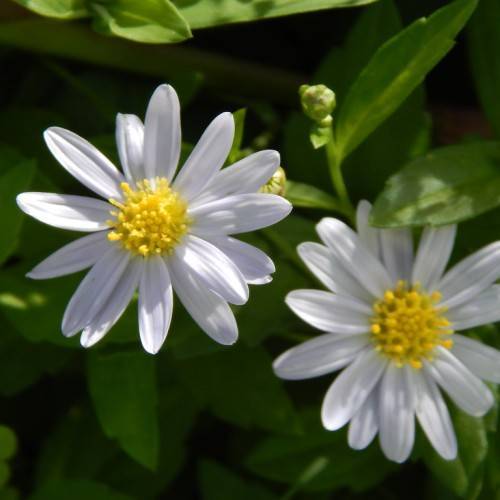
kalimeris
Kalimeris yomena
Cycle:
Herbaceous Perennial
Watering:
Average
Hardiness Zone:
5 - 8
Flowers:
Flowers
Sun:
Full sun,part shade
Leaf:
Yes
Growth Rate:
Low
Maintenance:
Low
Drought Tolerant:
Yes
Salt Tolerant:
Yes
Invasive:
Yes
Care Level:
Medium
watering
Kalimeris (Kalimeris yomena) should be watered regularly. During the growing season (spring and summer), provide deep, thorough watering about once a week. The soil should be allowed to dry out between waterings. Water as much as necessary to keep the soil slightly moist, but not waterlogged. During the winter months, water less frequently, allowing the soil to dry out between waterings. It may need no more than 1 or 2 waterings a month in winter, depending on the temperature and how dry the soil is.
sunlight
Kalimeris yomena plants require full sun for growth, producing the best flowers in full sunlight. During the summer months, Kalimeris yomena should receive at least 6 hours of direct sunlight per day. In the winter months, it should receive at least 4 hours of sunlight per day. During the hottest days of the summer, it may require shade in the afternoon. In cooler climates, Kalimeris yomena can often tolerate shade for most of the day.
pruning
Kalimeris (Kalimeris yomena) should be pruned in late winter or early spring, when new growth begins, and several times during the growing season. Pruning should be light, removing no more than 1-third of the plant's total height. Remove branches that appear dead or that are excessively long or wide, taking care to shape the plant for a pleasing silhouette as desired. Remove crossing branches, and also any branches growing into the center of the plant to increase air circulation. Though not necessary, deadheading is beneficial for this species to encourage bloom throughout the season.
